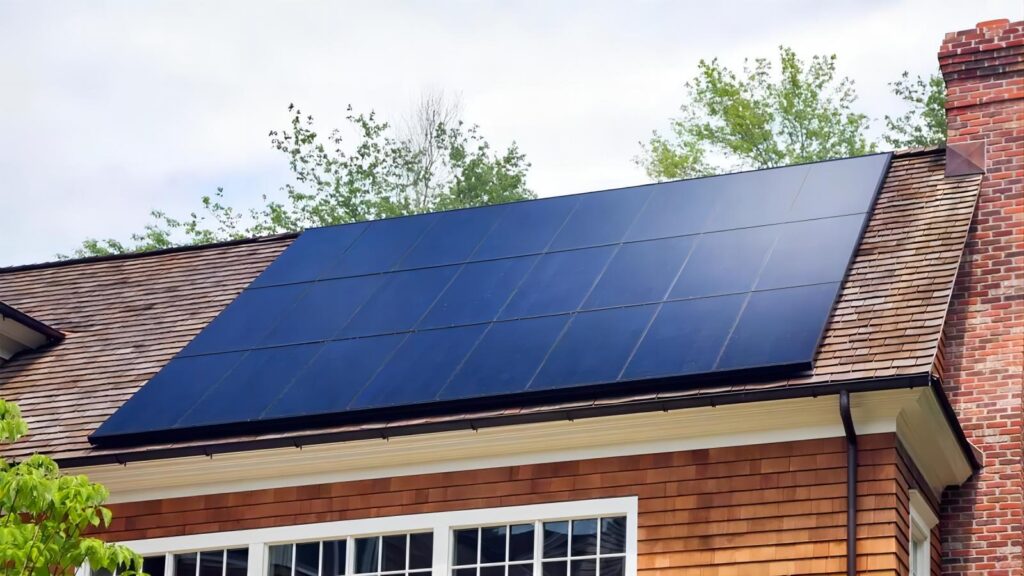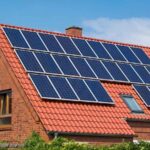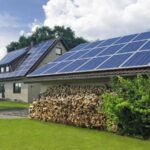On September 5, in the photovoltaic company LONGi in its 2023 semi-annual results briefing, chairman Zhong Baoshen said: “LONGi has a very clear point of view, the next 5 years – 6 years, IBC type of battery will be the absolute mainstream of crystalline silicon cells, including bifacial and monofacial cells, the next LONGi a large number of products will be heading towards the IBC technology route.
What is IBC solar panels?
IBC (Interdigitated back contact) is a technology that moves both the positive and negative metal contacts to the back of the battery.Its efficiency conversion idea is different from other batteries, is the front of the battery electrode grid line all transferred to the back of the battery, by reducing the grid line on the sunlight shading to improve the conversion efficiency, mainly through the structure of the change to improve the conversion efficiency. That is, through physical transformation and laser technology to achieve efficiency gains.
As the front side avoids the shading of light by the metal grid electrode, it can maximize the use of incident light and reduce optical loss, and then achieve the purpose of improving the photoelectric conversion efficiency. This means that this structure can be stacked with a variety of technologies such as PERC, TOPCon, HJT, and Calcium Titanium Ore.
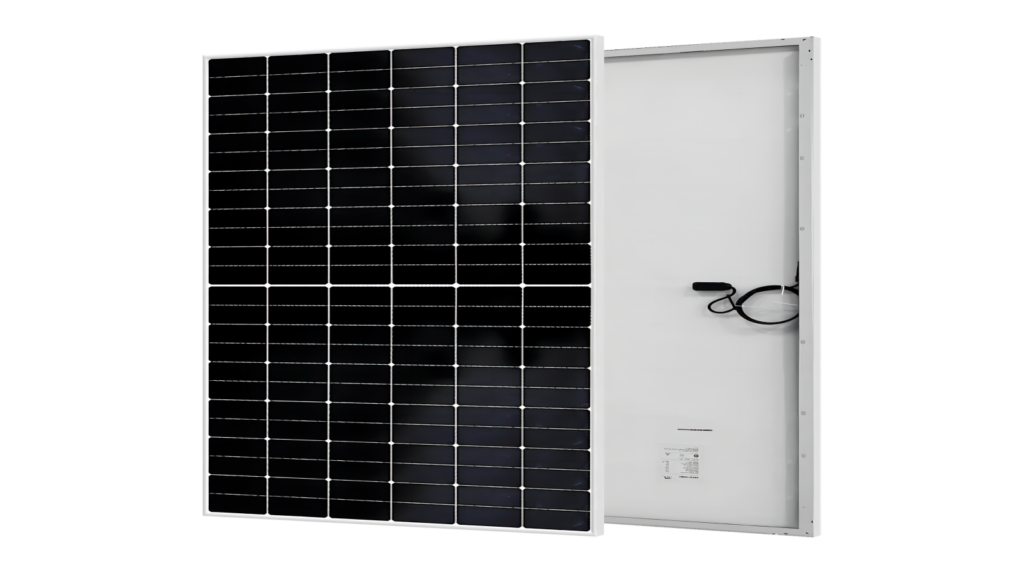
What are the advantages of IBC solar panels?
1.The most advanced technology
It is a technology that moves the positive and negative metal contacts to the back of the battery. It is a technology that moves both the positive and negative metal contacts to the back of the battery. This is one of the most high-end technologies in the current solar panel market
2. Higher conversion efficiency
IBC solar panels’s power generation efficiency is 22.5-23.2%, which is around 2% higher than PERC, about 1% higher than TopCon. No busbars on the front reduce light loss and maximize cell efficiency and power generation. IBC panels increase the effective surface area of the solar cell by eliminating front metal connections that block sunlight. The electrical connectors on the IBC panel are located on the back, allowing for more efficient and effective use of the sunlight received.
3. Lower temperature coefficient
High temperatures will reduce solar photovoltaic efficiency, while low temperatures will increase solar photovoltaic efficiency. Low temperature coefficient refers to the sensitivity of a substance to changes in temperature at low temperatures. In nature and industrial production, low temperature coefficient is a very important parameter, which has an important impact on the performance of materials, the safety and reliability of equipment, and the effectiveness of scientific research. The temperature coefficient of IBC solar panels is only -0.29%/℃. However, TopCon and PERC solar panels are only -0.35%/℃. This means IBC solar panels can provide better performance in hot climates.
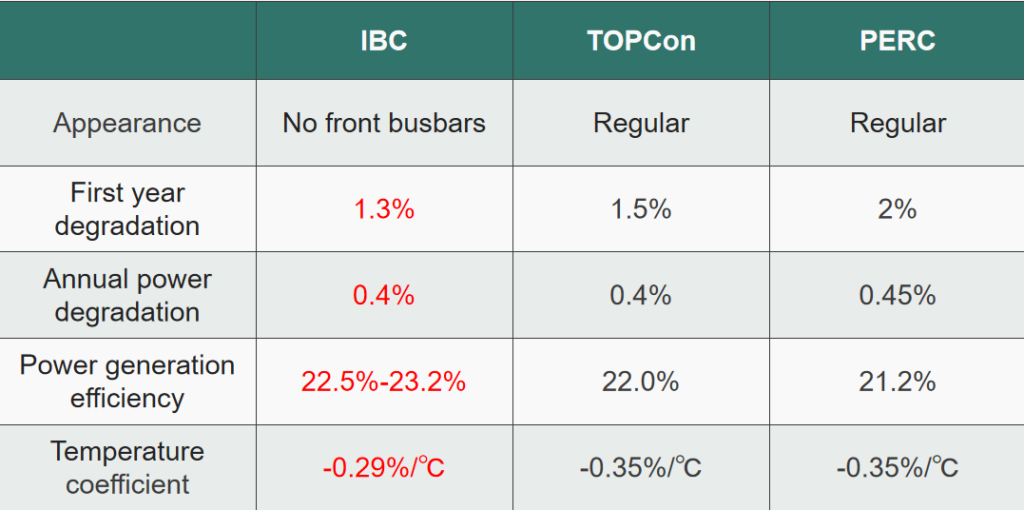
4. Better appearance
IBC is a technology that moves both the positive and negative metal contacts to the back of the cell. It can make the front of the cell facing the sun completely black, and the metal lines on the front of most solar cells cannot be seen at all. It provides users more beautiful full black appearance. This functionality is especially useful for residential and architectural projects where solar panels must be smoothly integrated into the overall design.
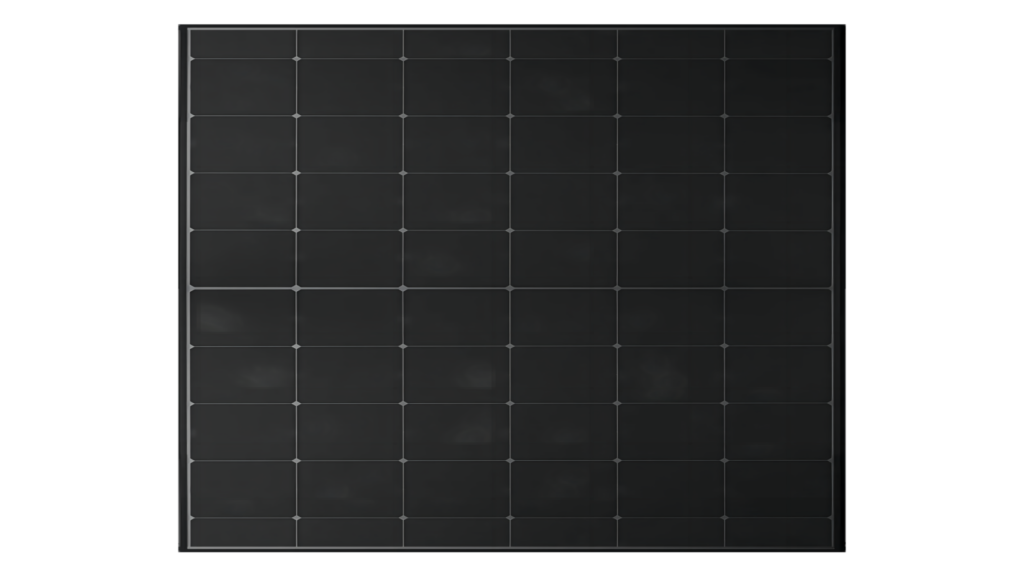
5. More application scenarios
IBC panels can be utilized for a variety of purposes, including rooftop installations, solar farms, and mobile balcony photovoltaic systems, among others. Because of its efficiency and adaptability, IBC technology is the greatest choice for usage in circumstances where there is a lack of available space and a high demand for power generation.
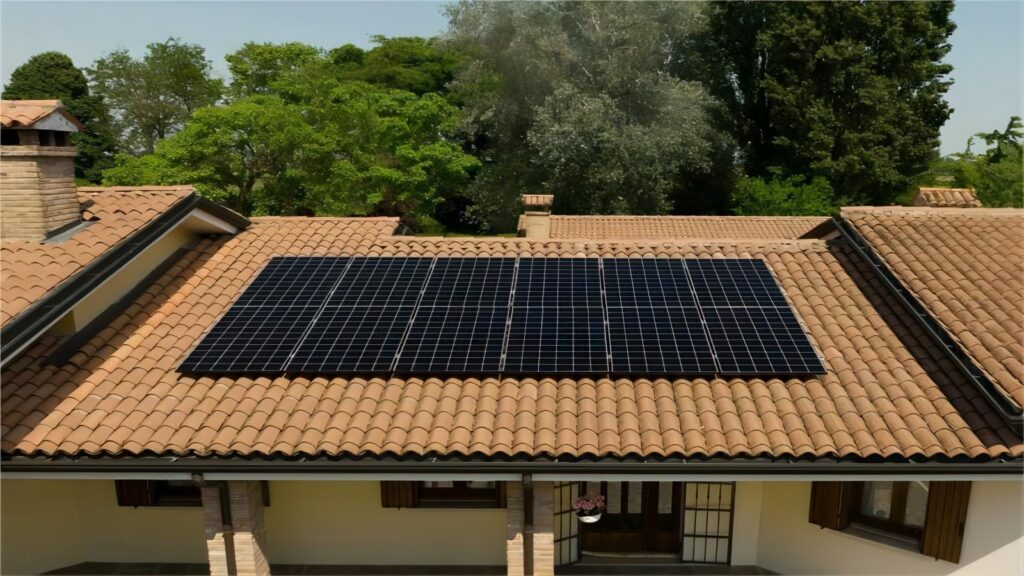
6. Higher reliability
Compared to PV modules made by front welding, the reliability and stability of IBC modules are greatly increased due to the lack of solder joints.
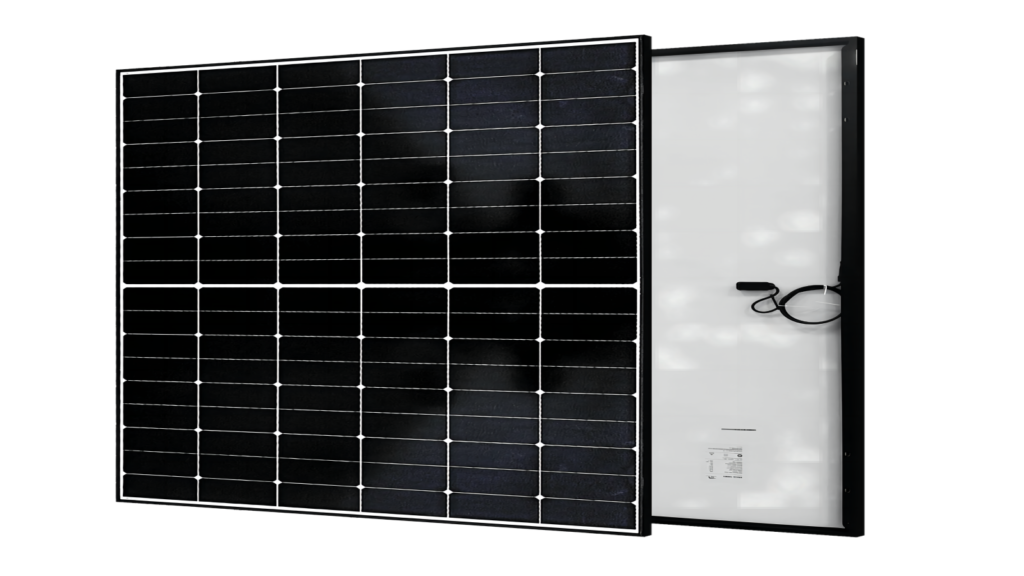
What is the bottleneck of IBC solar panel?
- The technical difficulty is relatively large. all the electrodes of IBC structure are on the back side, which needs to be well isolated, otherwise it will be short-circuited if it conducts.
- The process is more complex, the material requirements are also very high, and the stability of the battery is poor.
- The aesthetics are not applicable to all scenes. It is more suitable for distributed application, but the application of ground power station should be more cautious.
Maysun has long been known for providing the most technologically advanced and cost-effective solar panels, and the new IBC solar photovoltaic products further solidify Matson’s leadership in renewable energy. German customers have ordered our Maysun IBC solar panels, come and take a look!
Maysun’s solar panel product range includes various specifications and sizes to meet the needs of different customers. Whether for home installations or industrial applications, Maysun provides highly customized solutions to ensure customers can maximize the use of solar resources and achieve significant savings in energy consumption.
If you become our partner, you will get:
- The best B2B price: Maysun always offers the best factory price for B2B partners.
- Marketing support: Provide marketing promotion support in the partner’s region and introduce potential customers.
- Product technology training: Regularly provide training to ensure that partners master the related industry technical knowledge.
- Perfect after-sales guarantee. The local office and local warehouse provide return and exchange services.
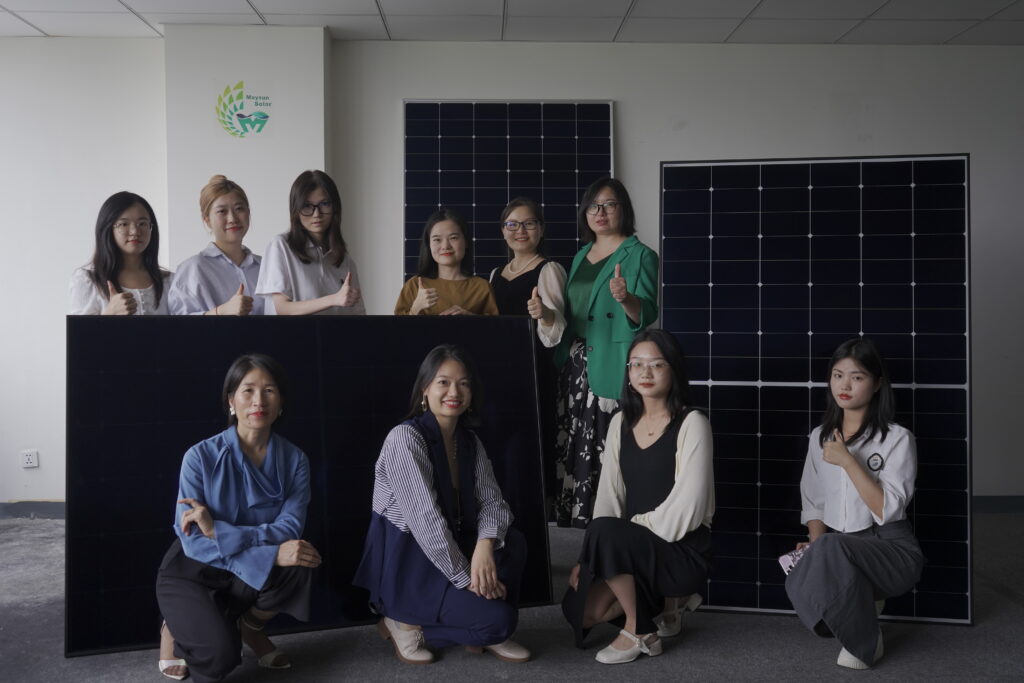
Reference:
OFweek (2023)Sudden surge, global leaders announced big news, triggering a huge shock in the photovoltaic industry
https://solar.ofweek.com/2023-09/ART-260018-8460-30610485.html.
OFweek (2023)IBC type battery replaces TOPCon? Longi Green can see “far”
https://solar.ofweek.com/2023-09/ART-260018-8420-30609875.html
OFweek (2023)Betting on IBC Battery, LONGi gives itself a “window”
https://solar.ofweek.com/2023-09/ART-260018-8460-30610365.html
OFweek (2023)LONGi’s “full warehouse” IBC battery! Has the photovoltaic competition landscape changed?
https://solar.ofweek.com/2023-09/ART-260018-8120-30609611.html
OFweek (2023)Leverage photovoltaics! IBC batteries detonate the market
https://solar.ofweek.com/2023-09/ART-260018-8420-30609911.html

Empowering Factories with Solar Energy A Strategic Tool for Controlling Production Electricity Costs
Commercial and industrial solar is becoming a key solution for factories to reduce electricity costs and hedge against price fluctuations. This article systematically analyzes its deployment models, cost advantages, and sustainable value pathways.

How Businesses Can Offset Carbon Taxes with Solar Power
This article analyzes the latest carbon tax policies and photovoltaic deduction strategies, helping European businesses legally reduce taxes, increase profits through solar investment, and achieve a win-win situation for both economy and environment.

Forecast and Response: Seizing the Next Decade’s Growth Dividend in Europe’s Commercial and Industrial Photovoltaics Market
Maysun Solar analyzes the growth trends of commercial and industrial photovoltaics in Europe over the next ten years, from policies and ESG to technological innovation, helping companies seize the initiative in the energy transition.

How to Calculate Solar System ROI and Optimize Long-Term Returns?
Solar power is becoming a key solution for businesses to reduce costs and improve efficiency. Accurately calculating ROI and optimizing long-term returns are essential to maximizing investment value.

Will Agrivoltaics Affect Crop Growth?
Agrivoltaics combines solar energy and agriculture to reduce up to 700 tons of CO₂ per MW, improve water use, and boost crop growth for sustainable farming.

6.5 Billion Loss Hits Photovoltaics: Reshaping or Elimination?
In 2025, the photovoltaic market may see a turnaround as some companies take early action. A €6.5 billion loss is driving businesses to explore new growth areas like energy storage and hydrogen. Which giants will break through? Industry transformation is accelerating!

